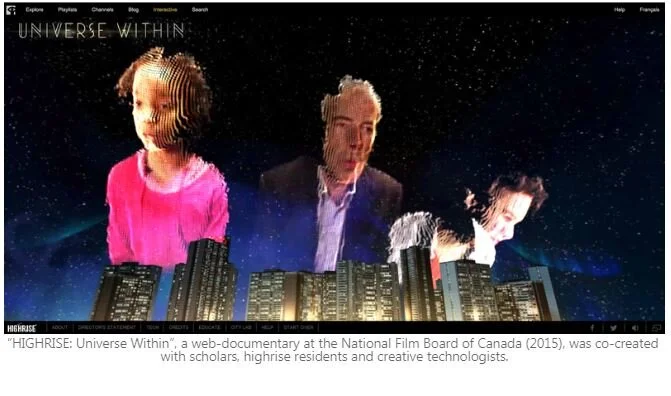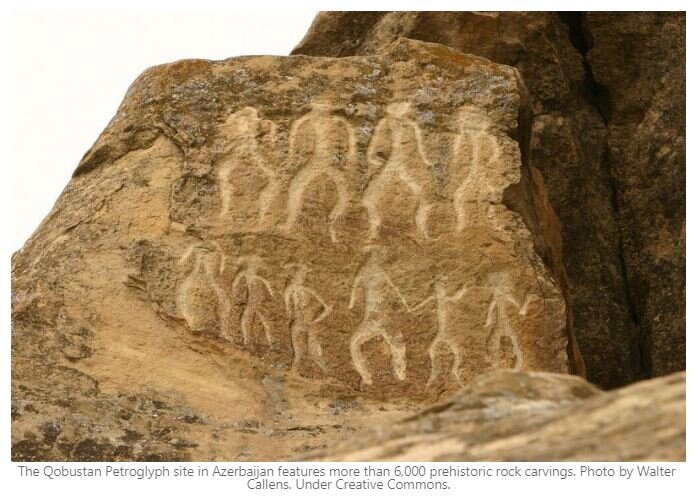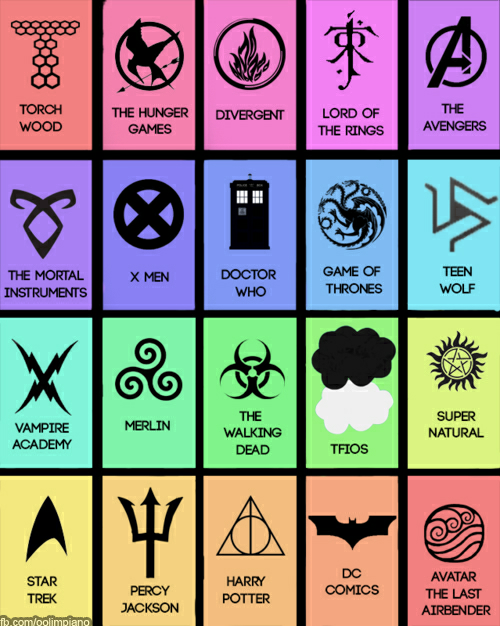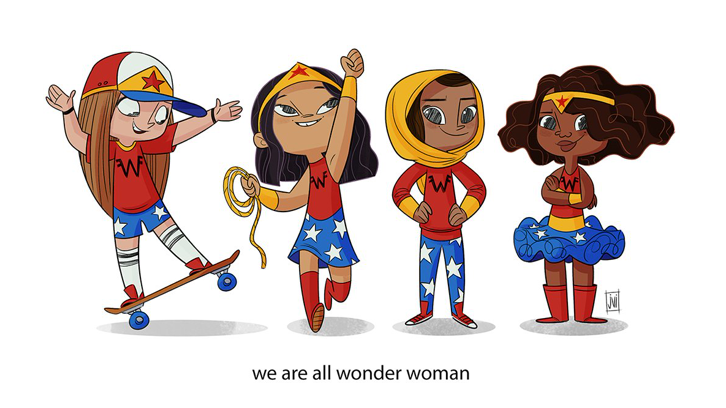Comic Books Incorporated: Interview with Shawna Kidman
/Every so often, you teach a class where the gestalt is just right. When I first arrived at USC, I agreed to teach an independent study with a group of students — from three different universities — who wanted to learn more about fandom and participatory culture. One of those students — Flourish Klink — skyped in from MIT, since she had come to the Comparative Media Studies program to study under me and I had left her high and dry. Today, Klink is the co-host of the Fansplaining podcast and consults with major entertainment franchises about their fan relations. A second — Aymar Jean Christian —who skyped in from the University of Pennsylvania has since written and published Open TV: Innovation Beyond Hollywood and The Rise of Web Television. My new colleagues in the USC Cinema School sent over their best and brightest. Taylor Nygaard is now a feminist television scholar on the faculty at Arizona State University and finishing work on a book dealing with Pinterest as a platform. And Shawna Kidman has recently published Comic Books Incorporated: How The Business of Comics Became the Business of Hollywood.
I should just retire now.
Kidman entered the seminar having already worked for several years within the comics publishing world. I recall her as being the most skeptical student in the lot, her experiences within the industry coloring how she perceived media audiences. Her new book asks equally tough questions, representing a major contribution not only to our understanding of the history of American comics, but to media industry studies more generally.
As the title suggests, there is no question that the comics industry exerts a strong influence today over decisions made in the film, television, and games industry and more than that, she shows us the ways that ideas that emerged in comics publishing are now playing themselves out in terms of the structures of those industries also. She questions the established wisdom about the comics scare of the 1950s, the legal battles over Superman’s authorship, the rise of HBO original programming, the place of underground comics, and more generally, claims about the subversive or subcultural status of comics as a medium.
She’s done the original research, she brings a media industries perspective, and she does the hard work of constructing and supporting revisionist arguments throughout. As one of her teachers, I could not be more proud..
Part of your personal narrative has been a shift from working in the comics industry to becoming a media scholar. How did your earlier experiences inform the approach you took in this book?
Yes, my first encounter with comic books was as a worker, not as an academic, and not as a fan. Part of why DC Comics hired me was actually because I didn’t fit the profile of most of their job applicants; I wasn’t steeped in comic book culture and I didn’t have a typical fanboy/fangirl perspective. But I did have a media background—I’d had jobs in film development and film financing during and after college. That helped me to understand the Hollywood folk the company was interacting with, and that’s really what DC needed around 2005 when it was trying to improve its west coast presence. During the few years I was there, first as an assistant and later as a creative executive, I got a crash course in comics and read a ton. I spent a lot of time with editors, met a lot of writers and artists—it was amazing. But I learned more about the business side, since that was what got me the most excited.
I think this separates me from a lot of scholars in this space, who are drawn to comic books because they love the medium. It was the dynamism of the industry that I loved. The maneuverings and politics were endlessly fascinating, because they seemed like a little window into the heart of Hollywood: small subsidiary vs. major conglomerate, creators vs. executives, original stories vs. pre-sold content, and the never-ending effort to milk the life out of every single product, whether or not it was popular. I was also a history geek, so I read everything that Les Daniels wrote, and the Gerard Jones’ book, and anything else I could get my hands on. But all of those guys, even though they told great stories, largely ignored the business. And because I was witnessing it first hand, seeing how the decisions were getting made behind closed doors, I knew there was more to it—that part of the story they were telling must have gotten lost. That nagging feeling stuck with me. But I didn’t have the language or conceptual background to articulate what the story was, or how it fit in to the big picture.
That’s when I decided to go to grad school for Media Studies, which basically meant “film and television”. Still, I thought about comic books every day. Everything I had learned while working was so relevant and seemed to give me this unique insight into art, and history, and Hollywood. That notion, that I had something to say because I had been a worker, and that industry dynamics matter in the creation of culture, pushed me towards Industry Studies as a subfield. I learned everything I could about regulation, distribution, and intellectual property. And slowly, with this new vocabulary, I was able to start giving context to my work experiences, and put it together in a coherent narrative. Of course, it took about a decade more of research to actually get there.
NEWS-STANDS IN THE 1930S
While you write about comics history here, you see yourself more broadly as a scholar of media industries. What can a close study of the comics industry help us to understand about other creative/media industries?
Yes, media industries is, in an everyday sense, my area of practice. I worked in the media business, I was trained in media studies, I read about the media business, I teach classes about media and the media business, I consume media. Today, all of this necessarily means being media-neutral. It makes no sense, and is actually kind of impossible, to take an interest only in television, or film, or streaming, or interactive, because the lines between all of these spaces have become so blurry. This is especially true for those of us who look at the business side, where these barriers are even more fluid. For me, comic books are very clearly a part of this media jumble, and accordingly, they deserve serious attention from media scholars. For example, I don’t see how someone could fully comprehend the global theatrical market today without understanding something about the way comic book companies like Disney and AT&T manage their intellectual property. And if you don’t typically think of Disney and AT&T as comic book companies, then you’re already working with too limited a scope.
That said, my book is a history, and most people think the media business hasn’t always been quite so blurry. But there were never strict media siloes. There was not a time in the history of mass culture when producers in one medium weren’t constantly looking over their shoulder at other media, checking out the competition, borrowing, selling, merging, jumping ship, jumping back; this merging is a huge part of the history of mass media. And that is especially clear when you look at comic books. So the first reason it’s a great media case study is that it reveals the extent to which commercial entertainment has always been a transmedia affair. Comics publishing was a relatively small business, and since it was under constant threat (declining sales, deteriorating distribution, labor problems, tough financials), it was forced to live in the margins of the entertainment industry, the in-between spaces of more profitable media companies, merging, borrowing, scrounging for its future; it was a scrappy business.
By the 1970s, comic book companies were in fact no longer primarily publishers. They were toy licensers, cartoon producers, feature film developers. Or in other words, they were intellectual property (IP) companies, long before that was even a thing. So as the entertainment industry shifted toward franchises and brands during the 1980s and 1990s, and then gradually reoriented itself around IP management and exploitation, comic books increasingly moved to the center of mainstream media production. This is the second reason why it’s a great media case study—comics have of course provided a lot of source material for contemporary media, but more interesting than that (at least for me), the business works as a kind of pre-history for the franchise era we’re currently in.
DC OFFICES
Throughout the book, you push back against the idea that comics are “fundamentally subversive, subcultural, and resistant” in favor of a focus on the idea that “the infrastructures of comics culture...by and large, belong to and are controlled by the comics industry.” What kinds of infrastructures do you have in mind? Is the idea of a medium being “subcultural” necessarily at odds with a medium being “corporate”?
So to really answer this, I have to get into a little bit of theory. If your definition of “subculture” is simply a smaller cultural group within a larger one—a cultural “subdivision”—then that subculture can be anything, and have any attribute. But within the field of Cultural Studies, the concept of “subculture” is a lot more specific and refers to the culture of a subordinate group; a subculture is thus necessarily a cultural community that lacks power, one that is not hegemonic or dominant. When we’re looking at comic book culture writ large, we’re primarily talking about the stuff published by DC and Marvel (and also Dell, Harvey, Image, Dark Horse, IDW, and many others). This is culture produced by corporations with legal teams, with access to established institutions (universities, museums, etc.), with access to financial capital, and with relationships to Hollywood. Publishing is a tough business, so not all of these companies succeed or post huge profits. But that doesn’t mean they are powerless or that the individuals running them could be considered “subordinated”.
This remains true even when these corporations produce comics that are dark, or controversial, or meta. They may seem subversive, but these works are part and parcel of mainstream or hegemonic culture. In fact, part of what makes our dominant culture so effective is its ability to incorporate and draw from stuff on the margins, stuff that seams resistant, but doesn’t actually upset any power imbalances. So a dark and twisted version of Superman, or a politically themed graphic novel that wins a Pulitzer Prize—these don’t strike me as being particularly subversive or subcultural texts. Of course, when you look at both the long history and the current scope of comic book culture, there are certainly moments of subversiveness and pockets of resistance—the work of the Underground in the late 1960s, elements of the alternative press in the 1980s, self-published graphic novels today, etc. But after researching this book, I don’t believe that these pockets are representative of the medium; I think they’re exceptions and that comic book culture has, for the most part, emanated from a place of power.
This is where my focus on industry infrastructure was really eye-opening. (And by industry infrastructure, I mean the parts of the business that usually go unnoticed—the everyday practices and systems that give shape to workplaces, and that ultimately have a huge impact on the media produced. It’s one thing for an artist to draw an image, and quite another for that image to become a product, to enter into circulation to be sold and consumed. That transformation doesn’t happen without help from some matrix of organizational bureaucracies, legal frameworks, financing structures, and distribution networks, or what I refer to as “industry infrastructure”.) When you look at the infrastructural history of comic books, aspects of the culture and the business that may at first have seemed like confirmation of comics’ subversiveness start looking like something quite different. This wasn’t something I set out to argue when I started researching the book, but every case study I got into ended up moving in this direction.
For example, consider the comic book community’s collective excitement around creator rights, the widespread support for Jack Kirby’s claims against Disney, and fans and creators coming to the rescue of Siegel & Shuster in their fight for ownership of Superman. These struggles seem to many like the embodiment of resistance against corporate culture. But when you look at the nuances—the court decisions, the terms of the contracts, the outcomes of the labor struggles, the profit breakdowns—things become a lot murkier. I discuss all of this in my chapter about creative labor and copyright, and I ultimately argue that what may seem like creator “resistance” often helps corporate IP owners shore up their copyright claims. And the relationship between some dissident creators and the corporations they publicly oppose tends to be a lot more symbiotic than we’re often comfortable acknowledging.
SUPERMEN: SIEGEL AND SHUSTER
Many of your chapters revisit the traditional story of comics history with its heroes and villains showing how our understanding of these events shifts if we focus on industrial developments. How, for example, does your approach lead to different conclusions about the comics crisis in the 1950s?
Most accounts of the 1950s focus on Fredric Wertham. He accused comic books of having indecent content and he fought to limit their circulation. His crusade supposedly led to a code of censorship that altered content and caused a steep decline in sales. I took Wertham’s legacy seriously when I began my research, but it wasn’t long before I realized his significance had been vastly overstated. This was a man who was not well respected by scholars, who was quickly forgotten by the mainstream press, and who was largely ignored by politicians, even though they briefly brought him national attention.
This becomes pretty clear when you look at the congressional investigation into comic books. The public hearings started with Wertham and his claims around juvenile delinquency, and that’s the part most people remember. But these hearings moved on to other business matters pretty quickly. The resulting transcripts are a treasure trove of fascinating details about the day-to-day practices of the industry. Reading through it, I found that publishers were facing a perfect storm of problems: not just bad press, but competition from television, an overcrowded market, and a breakdown in the distribution network. As is often true in media, it was distribution that turned out to be the biggest challenge. It’s easy to ignore distribution networks when they’re functioning properly; like other aspects of infrastructure, their nature is to fade into the background. But as soon as they break down, as they did in the magazines and comics business in the 1950s, everyone realizes how important they are. At the time, it seems like that was all anyone could talk about. The Congressional hearings, the trade press, the memos between executives—it was all about solving distribution.
The censorship code, meanwhile, turns out to have been something of a smokescreen. It was developed by the big publishers, who disregarded nearly all of Wertham’s arguments about indecency. That didn’t seem to matter though. Merely by embracing the concept of self-censorship, regardless of the specifics, they were able to get Congress off their backs and change the public narrative. The Code, meanwhile, allowed a struggling distribution business, part of which was vertically integrated with publishing, to limit and better control the content pipeline. With the Code, distributors could more easily refuse comics from smaller publishers in order to give preferential treatment to their own material. They recalibrated a shrinking market in their own favor. This of course is a familiar story. Sixty years later, we’re still dealing with vertical integration and with distributors who give preferential access to their own content.
SEDUCATION OF THE INNOCENT? SENATE HEARINGS IN THE 1940S
What might your approach tell us about the role which Stan Lee has played in recent decades in helping to authorize the MCU films?
I’m glad you asked this because I don’t write much about Stan Lee in the book. I wanted to shift attention away from individuals and towards systems and structures. That said, Stan Lee was unquestionably an innovator and had a significant impact on the medium and on modern fandom. Back in the 1960s, he created an incredibly compelling public persona, a literal character in some instances, which he inserted into the comic books themselves. And he used that to cultivate a very personal relationship with readers, who grew deeply connected with the Marvel brand through him. That personal connection to a living breathing individual mattered to fans then, and it matters to fans today too.
Which is why I think Stan Lee’s legacy is still so significant for audiences, although I would argue that the mantle has largely been passed to Kevin Feige. It’s worth mentioning though, that this role that Feige and Lee fill—putting a human face on a cherished brand—isn’t necessarily about authorship or creativity in the traditional sense. Lee did of course help create Marvel’s marquee characters, but it’s hard to know exactly what his role in that creative process was (especially given the heavy mythologizing around the Marvel Method, not to mention all the litigation), and how much of these characters’ inventiveness can be attributed to him individually. The same can be said about Feige. We know he plays a role in the creative process of the MCU, but we can’t actually pinpoint his contributions. It seems like the thing that actually most distinguishes both Feige-produced films and Lee-created comics are their tone—relatable, cheeky, humorous, but never condescending. That tone defines the Marvel brand, and Lee and Feige’s participation as creators or auteurs has helped humanize that brand and give it a kind of cultural legitimation (which arguably has been the primary task of all cinematic auteurs; Foucault and many others see this purpose as part of the “author function”).
I’m actually writing a new piece about this topic right now, and what’s becoming clear is that the rise of figures like Lee and Feige, creatives who are ultimately known more for their work as executives (managing creative teams, representing the corporate brand, establishing a house tone or style), tracks pretty closely with the rise of franchise culture. As expanding story universes have replaced the old production model—isolated films and TV series—we’ve seen the story-overseers, typically producers and executives by trade, become more important than directors, whose names used to sell movies.
STAN LEE WITH SPIDER-MAN
You discuss comics fans as “privileged,” which would seem to be the exact opposite of John Tulloch’s concept of television fans as a “powerless elite.” In what sense are comics fans privileged and how is their influence felt within the comics industry?
Yes, this is definitely true. I believe that comic book fans are privileged in many ways, so much so that I don’t really consider them to be a subculture at all. I’ll stick to just two points though, which I think most directly address Tulloch’s argument. First, comic book fans are very well represented in the film and television industry, disproportionately so. Comic book publishers estimate the comic-book-reading audience in the US at two million people, or less than 1% of the population. Now if you spend any time in Hollywood, you quickly realize that way more than 1% of the people are reading comic books. Sure, some of them are just looking for source material, and some of them may be overstating their reading habits, but even so, it’s an extremely well-regarded medium within that creative community. This is even more true when you look at the upper echelons of the entertainment business. A huge portion of the guys who have been dominating Hollywood for the last thirty years are lifelong comic book fans. Now this may be for good reason—comic book reading could theoretically improve creative thinking and thus statistically increase the likelihood of someone ending up with a career in media. Regardless, I think you would be incredibly hard pressed to argue that comic book fans are a population that lack access to cultural production or decision making.
Second, even comic book fans who are just fans—who have no role in the media business and don’t desire any—get a kind of preferential treatment in Hollywood that is, again, disproportionate with the community’s actual size. By this, I mean that media gatekeepers typically take the opinions of comic book fans more seriously than they do those of other interest groups or cultural communities. There are many reasons for this. For starters, comic book fans often fall into what some consider the “right” demographics—young, male, white, educated—so advertisers are willing to pay more for them. Many comic book fans have also been early adopters of technology. So a fan presence was established early on the web and remains highly visible. This is one of the reasons Hollywood flocked to San Diego Comic-Con in the early 2000s—they wanted online fan support (this has changed a bit in recent years, but that’s a discussion for another day).
Of course, comic book fans are not all-powerful and they are not one thing—this is a heterogeneous constituency that is sometimes heard, sometimes not. But if you identify as a comic book fan, you are generally far more likely to be catered to by mainstream media producers, and your criticisms are far more likely to be heard, than would be the case if, say, you identified as a hip-hop fan or a reader of romance novels. Relatively speaking, comic book fans are among the most powerful consumers of media out there. Which is part of why comic book adaptations are so incredibly prevalent across film, television, and gaming.
Your book keeps its focus fairly tightly on the American comics industry but Hollywood increasingly factors global box office into its model of commercial success. What role have these global calculations played in shaping the current moment of superhero blockbusters?
The global box office plays a very significant role in the spread of comic book IP. In fact, most of the big superhero movies make more abroad than they do in the US, and this has always been true. Even back in 1978, Superman made more money in foreign theaters than domestic. Of course, many executives in Hollywood are familiar with this general track record, which supports the widespread notion that effects-driven action films just play better globally. The rule-of-thumb has been that, unlike comedies and dramas, they’re not dialogue driven (which is helpful when there’s language barriers) and they lack social and emotional nuance (which is helpful when there’s cultural barriers).
I think this logic drove a lot of production decisions in the early 2000s when the studios started pursuing global markets more aggressively. At the time, there were a number of additional factors fueling interest in comic book source material (all of which I cover in the book). I think, at first, the pressure to hit globally was no more significant than any of these other causes. But in the last decade and a half, the international market has continued to grow, and today, I think it is perhaps the biggest driver of this genre. It was a kind of circular logic that got us to this point: these effects films were always very expensive, so they had to find international success, which grew the market, fueling a need and a desire for more global blockbusters, with ever-growing budgets, further necessitating more international success, growing the market, etc., etc.
The thing is, I don’t find the initial argument particularly compelling. The notion that comedies and dramas won’t sell abroad is a lot like the idea that “black films don’t travel”. It’s been proven to be wrong again and again, but for some reason, continues to guide decision-making. It’s also not clear to me that international audiences prefer superhero films to other genres. All we can know for sure is that superhero films, backed by aggressive marketing and distribution efforts, have found massive audiences. Could other genres find those same sized audiences if given the chance? I don’t know. Will Hollywood ever put superhero dollars into non-superhero films and give it a try? I don’t know that either. The executives at Disney do though, and given the market right now, it’s completely up to them.
MARVEL IN CHINA
Shawna Kidman is an Assistant Professor of Communication at UC San Diego where she teaches courses in media studies. Her research on the media industries has been published in Velvet Light Trap, the International Journal of Learning and Media, and the International Journal of Communication. She is the author of Comic Books Incorporated (UC Press, 2019), a history of the U.S. comic book industry and its seventy year convergence with the film and television business.






































































